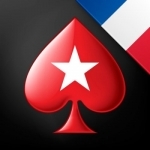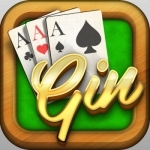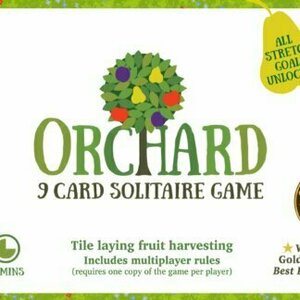Purple Phoenix Games (2266 KP) rated Century: Golem Edition - An Endless World in Tabletop Games
May 5, 2021
Disclaimer: This game comes with rules to incorporate any/all of the Century Golem games into one bigger game. In this review, I will only be discussing the stand-alone final game in the Century Golem trilogy. -L
Century: Golem Edition – An Endless World (referred to as just An Endless World for this review) is a game of set collection and worker placement in which players are trying to earn the most points by the end of the game. To setup the game, follow the instructions outlined in the rules, dependent upon your player count. Each player begins the game with 6 Trader meeples (or 7 in a 2-player game) in their supply, and a specified number/type of crystals. The game is now ready to begin!
On your turn, you will have 2 options: Work or Rest. To Work, you will first select a location square on the board. You may not choose a location where you already have Traders, or that has an Exploration tile. You will then place Traders from your supply onto the chosen location – the number of Traders required is printed on the location. If the location is unoccupied, simply place the required number of Traders. If the location is occupied by an opponent, you may place Traders there, but you must match the opponents Traders, plus an additional Trader, to take control of the location. Any opposing Traders ousted in this manner are returned to their players’ supply. Once you have placed Traders on a location, you can then perform the action listed on that location. Action options are: producing gems, upgrading gems, trading gems, or collecting Point cards/bonus tokens. If you cannot or do not want to use a location on your turn, you can Rest. To Rest, you will collect all of your Traders from the board and place them back into your supply.
Point cards can provide immediate, ongoing, or end-game benefits for players. Help cards allow you to place 1 fewer Trader than required on certain locations. Tool cards give players an additional gem of a specified color when they place Traders on corresponding locations. New Trader cards allow players to add either 1 or 2 more Traders to their supply, thus increasing their ability to play each ’round’ before needing to Rest. Finally, Exploration cards allow the player to select an Exploration token from the board. Any time an Exploration token is claimed, that location is now ‘uncovered’ and can be used for the remainder of the game. Bonus tokens grant end-game points based upon sets of icons collected, number of Traders in your supply, or simply straight-up points.
The game continues in this fashion, alternating turns, until a player has collected their 8th Point card. The current round is played out, and then points are counted. Points are earned through Point cards, bonus tiles, Exploration tiles, and any remaining gems in your supply. The player with the highest score wins!
One thing I really like about worker placement games is that the actual gameplay is pretty logical and straight-forward. Place your worker, perform action. And An Endless World is no exception to that. Of course, how you decide to play all comes down to your strategy, and again, An Endless World has tons of options for players. Maybe you want to just get 8 Point cards as quickly as possible and call it a day. Or perhaps you want to maximize your bonus tokens and eke out as many points from those as possible. Or maybe you even just want to keep your opponent(s) from achieving their goals. You can play this game so many different ways, and you can totally adapt and change strategy mid-game if you so choose. Each game feels unique and new, and I have yet to tire from this gameplay.
An Endless World is a worker placement game, but there is one factor that I find extremely unique for the mechanic. Usually, in worker placement games, once a worker has occupied a location, it remains there until the player chooses to recover their workers. An Endless World offers players the chance to oust opponents from locations, by placing the same number plus 1 additional worker. I just think this is super neat, because it means that you can’t just ‘block’ a location from everyone. If someone really wants that location, and they have the workers, they can get to that location. Also, along those lines, since ousting a player from a location means you have to match their workers plus an additional worker, you have to decide if you want to risk dedicating that many workers to a single location. You might reaaaaally want to perform that action, but for the cost of 4 Traders, is it worth it at this moment? Could those workers better be used on different locations and you just snatch your desired location on a future turn? All part of your strategy for the game, and definitely keeps all players engaged.
Let me touch on components for a minute. As with the other Century Golem games, An Endless World is extremely well-produced. The gems are the same quality, the cards are nice, thick, and clear to read, and the cardboard tokens are nice and sturdy. Plan B Games has hit the mark on this trilogy of games, and they truly are a pleasure to play. Obviously, the artwork and theme consistency throughout the Century Golem trilogy has been really satisfying, but that also carries over into the gameplay. All 3 games use much of the same iconography, so honestly learning An Endless World was super fast and easy for me. That uniformity is extremely user-friendly and is a huge plus for me.
So I guess you can see from my score and from reading this review that I am a huge fan of An Endless World. The final game of this trilogy is a home run for me, and I just keep thinking about what strategy I want to try in my next game. That in and of itself is an indication of a great game – thinking about it even when you’re not playing it! I have yet to try the variants that include the other 2 Century Golem games, and I am very much looking forward to integrating them all into one giant and (hopefully) awesome Century Golem saga. Purple Phoenix Games gives this one an expansive 16 / 18. Give it a shot, even if you haven’t played the other Century Golem games!
Purple Phoenix Games (2266 KP) rated Decktective: Nightmare in the Mirror in Tabletop Games
May 29, 2021
Decktective: Nightmare in the Mirror (which I will just refer to as Decktective from here) is an immersive storytelling card game where the player(s) attempt to solve the case by the time the final cards are drawn from the deck. At the end of the game player(s) are asked questions and, depending on the answers given, are scored by how many questions were answered correctly.
DISCLAIMER: We were provided a copy of this game for the purposes of this review. This is a retail copy of the game, so what you see in these photos is exactly what would be received in your box. I do not intend to cover every single rule included in the rulebook, but will describe the overall game flow and major rule set so that our readers may get a sense of how the game plays. For more in depth rules, you may purchase a copy online or from your FLGS. -T
Setup is super easy. Open the box, place the paper clips nearby, and set out the deck of cards. The game comes with no rulebook; the cards instruct players what to do along the way. I will not be covering ever facet of the game to avoid potential spoilers, so please keep that in mind.
The mechanics of this game system rely on players either playing or discarding cards as they are drawn. Essentially, players will need to discard enough cards to be able to play others. For example, some cards hold a value of 1-10, meaning that they may only be played to the table once there is at least 1-10 cards already existing in the discard pile. So a card with a value of 4 requires at least four cards in the discard in order to play. So choices will need to be made to determine which cards are vital and which can be sent to the discard. The solo player is eventually told that they may have five cards in their hands and the deck will guide the player through the rest of the game.
I really don’t think I can go much further without spoiling something, so I will stop here and hope I have given enough description of the mechanics to help with understanding.
Components. This is a big deck of oversized cards and a few red plastic paper clips. The clips are fine, but are a little tight on the cards, so I did not leave them on very long. They are only used at the end to answer questions, so I was able to only briefly use them. The cards are big and nice quality and feature great art. I do not want to give away too much, but there are times where the cards and the box have interplay, and I think their usage is absolutely genius. Great job on that!
This is a tough one to give my thoughts on without spoiling some things, so I will be vague. Not because I want to be vague, but because I feel I need to be vague. As I played through the game (and this is one of those that may only be played ONCE ever) I found my head needed scratched and my brows needed furrowed. I usually am not a player that thinks through their turns for a long time, but I felt I gave each card fair consideration throughout. This paid off at the end, but I still finished with a score of 7 / 10. I felt I probably could have achieved the full 10 but I did not really think about my answer on a card, and that one was worth those 3 points.
So here is what I ultimately think about this one (and possibly the entire Decktective series, though I have not played any others): I love it. I have also played several games in the Deckscape series and I definitely prefer Decktective. Is is the system or the individual game though? I am unsure. What I can tell you for certain is that of the three titles in the Deck- family, this is by far my favorite. I really wish I could qualify it much more, but I will offer this: once you play through this title, please message me and I will chat with you about my actual opinions on the game with spoilers a-plenty.
I do recommend this one, as I had an absolute blast playing it, and I think that a good number of players from all ages and skill levels will also enjoy it. If you happen to share my general game preferences, then you will like this one a LOT. Another great benefit? Once you are done playing you can gift it to another gamer or family or library or whatever you like. That said, I am eager to try the other Decktective titles just as soon as I can!
Purple Phoenix Games (2266 KP) rated Orchard: A 9 Card Solitaire Game in Tabletop Games
Mar 1, 2022
Orchard: A 9 Card Solitaire Game (simply Orchard from here on out) is a solo game where the player is attempting to harvest the most fruit from trees that are bred for high yield. As there are no players to play against, the player will instead compare their ending score with a table in the rulebook. Will the player’s game result in a “Pal-tree” score or will they score enough to be considered “Almost imposs-apple!”?
To setup, place the dice and Rotten Fruiteeple on the table. Shuffle the 18 cards, deal two decks of nine cards (two games worth), and choose a deck to play. Flip the first card over to start the orchard, shuffle the remaining cards and draw two into hand. The game is now setup and ready to begin!
Turns in Orchard could not be simpler: Play a Card, Place Dice, Draw a Card. From the two-card hand, choose one to be placed in the orchard with one very important rule: the newly-placed card must overlap another card in the orchard by overlapping matching tree types. So, a card can only be placed if the apple tree overlaps an apple tree, etc. More than one icon may overlap the existing card, but each icon must match types below it.
Once the new card has been placed, for each icon overlapped, a die matching the fruit type is placed on the icon. If this is the first time the tree has been overlapped, the die face is placed with value 1 showing. However, the die will increase in value each subsequent time it is overlapped (total die values of 1, 3, 6, 10). Therefore, when a card has been overlapped four times on the same icon, the maximum number of points has been reached for that icon. Should a player wish instead to forego any die placement and be unable (or unwilling) to place a card correctly, they may place any card, overlap an icon, and then add a Rotten Fruiteeple atop the mismatched icon. This spoils the fruit for the remainder of the game, so no further dice may be placed upon it, and also reduces the final score by three VP at game end for each token placed.
Finally, when the card and die have been placed, the player draws another card into their hand. When the final card has been played, or no further legal placements can be made, the game ends and the player totals up the dice values to arrive at their final score.
Components. This game is 18 cards of good quality, a bunch of custom dice, and two Rotten Fruit meeples. Everything is good quality and size, and it fits into a really cool sliding deck-box. The art, for me, is fine. The colors match fruits from the real world, and the dice match those color well enough too. I feel like different fruit choices could have been made to increase accessibility for our color-blind gamer friends. The plums and apples are both small and round (with an ever-so-slight different shape on the apple). I don’t know what other fruits would have been more appropriate – I’m not a botanist. Similarly, the dice are custom made with the pips looking like a plum or apple, and two sides of the dice showing a leaf icon. Perhaps in the interest of differentiation, instead of the leaves, the different dice colors could instead show the matching fruit style (if only the plum and apple looked differently enough). So instead of leaves, the red dice could show apples, the yellow dice could show pears, and the purple dice could show, I don’t know, eggplants? I am not color-blind, so these do not affect me, but it is something I have taken to commenting on as I review more and more games.
All in all, Orchard is a really good little game of overlapping and puzzling out next moves. The games are super-quick and engaging, and I always want to improve my score each time I play. When a game forces me to play again and again I feel it is a sign of a good game. I have plans to keep this one in its own special place where I can just grab it and go, instead of being dwarfed by my collection of much larger game boxes. If you are like me and pine for good solo play, then perhaps you should check out Orchard: A 9 Card Solitaire Game. The rules are light, game play is simple and fast, and it keeps drawing me in every time I look at the box.
Also let me know your highest score because I apparently am trash at this game, even though I really enjoy playing it. Have you scored in the top tier? Those must be some delicious fruits.

ProCamera HD
Photo & Video and Education
App
ProCamera HD, the gold standard for professional iOS photography, provides a highly intuitive...

iSymphonic Orchestra
Music and Education
App
The ultimate orchestra sound app for sophisticated musicians by award-winning sound designer Kurt...
![[5 CD]Classic Guitar [100 Classical music]](/uploads/profile_image/36f/31b0614a-0508-428e-8e43-f6757a04c36f.jpg?m=1522361064)
[5 CD]Classic Guitar [100 Classical music]
Music
App
3 Series 5CD 100 most classic Guitar ▪ [2 CD]Masters of the Guitar ▪ ▪ [2 CD]Spanish Guitar...

PokerStars: Poker en Ligne
Games and Entertainment
App
Play PokerStars Poker and join millions of players at the world’s largest poker brand. Challenge...

Gin Rummy ++
Games and Entertainment
App
One of the most popular card games, Gin Rummy is finally out!! Non stop Gin Rummy fun is finally...



